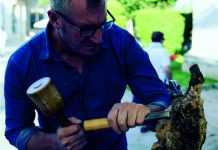The Cueva de la Victoria , located in the Archaeological Park of Rincón de la Victoria , is a great unknown in contrast to the popular Cueva del Tesoro. The difficulty of its access has kept it closed despite the cave paintings that it keeps inside. The Townhall wants the public to know about it and for this reason it has put out to tender the concession of the cave to make it visitable.
“The objective is to open to the public, efficiently and appropriately given its scientific and patrimonial importance, the Cueva de la Victoria, as well as providing it with a correct level of quality in the provision of services. The purpose is to reinforce and consolidate one of the main jewels of the municipality next to the Cueva del Tesoro ”, explained the Councilor for Tourism and the Cueva del Tesoro, Antonio José Martín (PP),The company awarded the will be in charge of the guided visits of the prehistoric site of Rincón de la Victoria.
The successful bidder must open the facility to the public permanently and continuously , as well as preserve and maintain the facility in perfect working order, cleanliness and health, throughout the term of the concession. The entrance to access and visit the Cave of Victory will be obtained through the prior reservation system and will be accompanied by a guide.
The mayor of Rincón de la Victoria , Francisco Salado (PP), expressed his satisfaction with the initiative “given the historical, patrimonial and monumental importance of this Neolithic funerary cavity located in a privileged environment such as the Archaeological Park.” “This government team works so that our historical heritage becomes one of the main tourist and cultural claims, and a reference not only in Malaga, but throughout Andalusia and Spain,” added the councilor.
The Cueva de la Victoria is an environment of high historical value, it has been the scene in which ancient inhabitants have coexisted and where different cultures have passed. The Cave of Victoria was a popular Neolithic burial cavity. Some 13,000 years ago the silhouettes of various individuals were depicted in one of its galleries. Each of them is positioned in a different way in front of the other in representation of the living
Most of the human figures are based on a simple scheme that represents the trunk and the upper extremities. The most striking and peculiar thing about this set of thematic motifs is the tonality they present. It is a colour that originally should have been almost white, although today it has turned to a more yellow tone. Inside this cave, numerous pieces were found, recovered and later were exhibited in the National Archaeological Museum, becoming one of the main Neolithic references of the Peninsula.




















